The Evolution of 3D Clothes Models: From Fashion Shows to VR
Fashion and digitalization… How are they interconnected with each other? Even 30 years ago, people would never have answered this question. But now, we are sure you know the answer! Talking about modern technologies, 3D clothes models have become real game-changers in the fashion world. Nowadays, the ability to create 3D clothes models offers an innovative approach to designing, prototyping, and showcasing clothes. This technology allows designers to create digital, three-dimensional versions of wear that can be tested in a virtual environment. It significantly reduces the need for physical samples, cuts down on material waste, and speeds up the design process.

Generally, 3D clothes models are not only about creating a digital replica of a garment but also about simulating how fabrics move, drape, and interact with the human body. 3D clothes models can be used to visualize changes in design instantly, make modifications, and even predict how a cloth will look on different body types.
Today, this technology is extensively used across various stages of fashion design—from initial concept to final marketing—and is particularly vital in the context of online retail, where it makes the shopping experience better by providing customers with a more realistic view of products. Furthermore, businesses are choosing 3D modeling clothes tools to improve the design and production processes and significantly bolster their marketing efforts.
Now, we will explore the origins of 3D clothes models, the various tools and software that have become indispensable to their execution, and their growing influence on fashion shows and business practices. Moreover, our experienced devabit team of designers will demonstrate their 3D clothes models that are successfully implemented into existing business models.
Read this article and find out how to create the best 3D clothes models and how to benefit from their implementation!
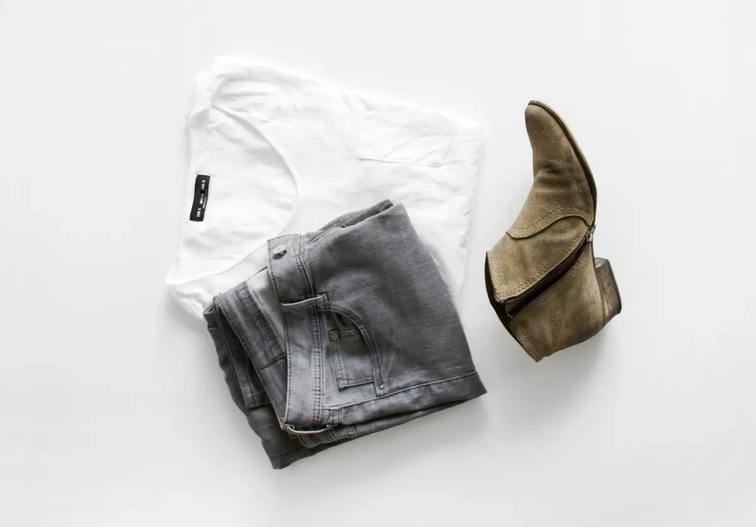
3D Clothes Models: A General Overview
The world of fashion is increasingly turning towards 3D clothes models as a tool to revolutionize design, production, and presentation. These digital models offer a detailed representation of clothing items, allowing designers to visualize and adjust designs before any fabric is cut. As of recent years, the fashion industry has seen a significant uptick in the adoption of this technology, with over 60% of fashion brands reporting that they are exploring or already implementing 3D clothes models design tools in their production processes.
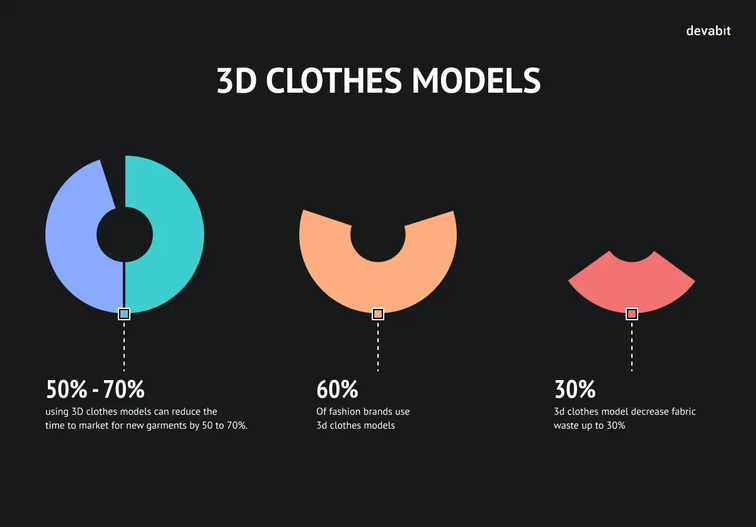
Why Do You Need 3D Clothes Models?
Now, everyone has heard about 3D clothes models, seen them in advertisements on the streets, or noticed them in social media. But why do people use them so actively? Let us shed the light!
There are many reasons for the strong popularity of 3D clothes models across various business industries. Overall, the adoption of 3D clothes models is driven by economic and environmental factors. According to industry analyses by the Sustainable Fashion Consortium, using 3D clothes models can reduce the time to market for new garments by 50 to 70%.
Moreover, 3D clothes models significantly decrease fabric waste—by as much as 30%—addressing the urgent need for sustainability in fashion. This reduction is crucial in an industry that is one of the largest consumers of water. By simulating how different fabrics and designs behave before physical production, many brands all over the world can minimize the number of physical samples needed, thus conserving resources and reducing environmental impact.
This technology also makes remote collaboration possible, as designs can be shared and modified in real-time, reducing the need for physical samples and thus cutting down on shipping emissions and costs. In customer-facing applications, 3D clothes models improve online shopping experiences, providing consumers with a better understanding of how a wear looks from various angles, which in turn can reduce return rates—a major cost and environmental concern for online retailers.
Some platforms even integrate 3D clothes models with virtual fitting rooms, where customers can see how clothes would look on avatars created after their own measurements. This advancement can drastically reduce return rates, which are a major cost and logistical challenge for online retailers.
In addition to this, nowadays, it is extremely difficult to find something really unique. So, 3D clothes models have found their destiny in the world of customized fashion. It is another mind blowing digital trend that is gaining much attention in the shopping world. We are sure that you have faced a perfectly fitted dress that has an inappropriate color or an ideal suit available only in a larger size.
Due to this, fashion and tech gurus have found different ways to solve this problem. As a result, the world has customized fashion. All in all, it is the easiest way to reduce time spent shopping, boost creativity, and find the perfect item for you.
The Evolution of 3D Clothes Models
The evolution of 3D clothes models in the fashion industry reflects technological advancements and changing industry needs. The concept of 3D clothes models began taking shape in the late 1990s but was initially limited by the available technology. These applications demonstrated the potential of 3D clothes models to save time and resources in the design and fitting processes.
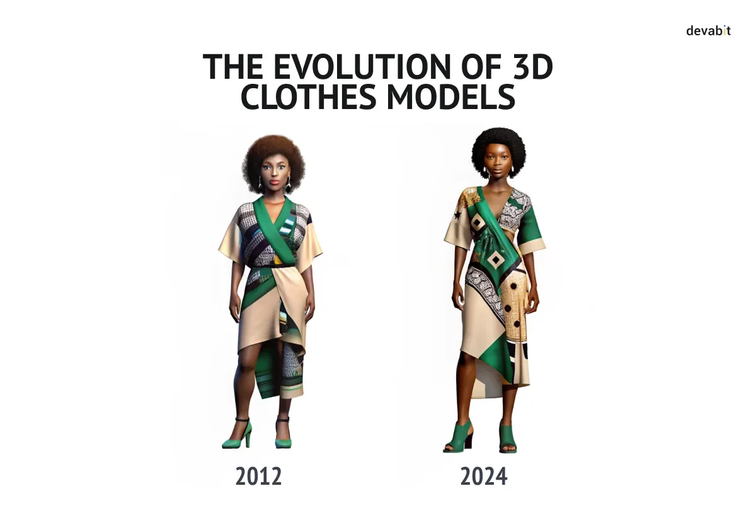
As computer processing power increased and software developers focused more on graphical capabilities and user-friendly interfaces, 3D clothes models became more accessible. During the early 2000s, pioneering software platforms started to emerge, focusing on the specific needs of fashion designers, such as fabric behavior simulation and pattern development.
By the 2010s, the fashion industry began to see the widespread integration of 3D modeling tools. At this time, 3D clothes models popularity was driven by the increasing pressure to speed up the design process and reduce costs, while also responding to the growing consumer demand for sustainable practices. With its help, brands could design, iterate, and approve samples digitally, reducing the need for physical prototypes.
The recent integration of AI and ML has completely revolutionized the development of 3D clothes models. These technologies enable more accurate simulations of complex fabric behaviors and interactions with the human body, such as stretch, drape, and fit. This level of detail helps designers create more accurate and innovative designs before transitioning to physical production.

Today, 3D clothes models are not just about creating a digital garment; they are about creating a complete digital environment where designers can experiment. The technology is integrated with virtual and augmented reality, offering new ways to showcase designs and engage consumers. Future developments are expected to focus on even more realistic simulations and interactive consumer experiences, potentially transforming how people interact with fashion brands and purchase clothing!
Software and Tools Used to Create 3D Clothes Models
Of course, you can always try to create some 3D clothes models by yourself! Today, there are lots of tools that you can use for building 3D clothes models with your PC, translating your visions into digital formats that accurately simulate real-world textiles and designs. Here, we explore some of the leading tools in the industry, describing their features, benefits, and unique roles they play in the fashion design process.
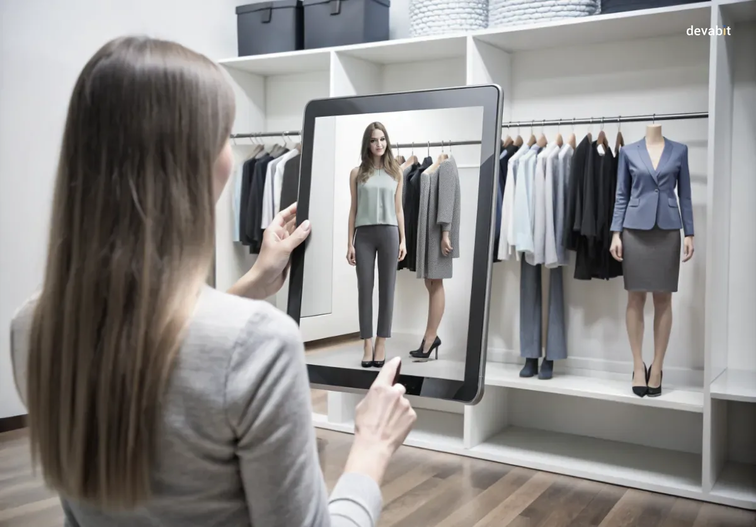
Marvelous Designer
Marvelous Designer is the most popular tool for creating 3D clothes models. It is widely recognized for its powerful simulation capabilities, particularly in how it handles fabric properties and dynamics. This software allows designers to create realistic 3D clothes models with complex textures and patterns that respond realistically to movement. Its simple interface helps users quickly understand the nuances of garment creation, from the drape of heavy wool to the flutter of light silk. Marvelous Designer is favored for both its precision in design and its efficiency, making it a popular choice among fashion professionals aiming to merge creative expression with technical accuracy.
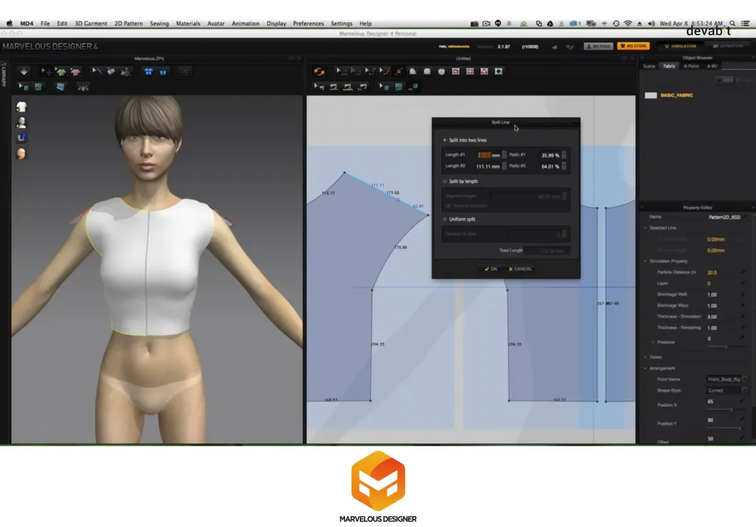
CLO 3D
CLO 3D is another widespread tool that assists in creating 3D clothes models and offers a modern environment for garment visualization, providing tools that cater to every stage of the design process. What sets CLO 3D apart is its diverse pattern-making tools, which allow users to alter wearing designs at the pattern level and see real-time updates on the 3D model. This feature is particularly valuable for ensuring that the digital models are not only aesthetically pleasing but also technically accurate and ready for production. CLO 3D's extensive fabric database also enables designers to experiment with various material effects without the need for physical samples.

Optitex
Optitex is a solution that stands out for integrating 2D pattern design with 3D simulation, offering a great transition between these phases of 3D clothes models. It is particularly effective in boosting the design and production workflow, reducing the need for physical prototypes, and enabling quicker revisions and approvals. Optitex also supports sustainability by minimizing waste during the design phase and is used by companies focusing on mass production due to its scalability and integration with other enterprise resource planning (ERP) systems.

Blender
While not exclusively a fashion design tool, Blender has capabilities that extend into the creation of 3D clothes models through its suite of modeling and rendering tools. Blender is open-source and highly customizable, making it a cost-effective option for startups and individual designers because it is a free 3D modeling tool. Its community-driven development means that it is continually updated with new plugins and features, including those that can simulate fabrics and textures for realistic garment visualization.

Autodesk Maya
Autodesk Maya is another powerful tool that, although traditionally used in the animation and film industries, has applications in fashion design for creating detailed 3D clothes models and animations. Maya excels at rendering complex materials and textures, providing designers with high-quality visuals that are essential for high-end fashion presentations and marketing.
As you can see, there are lots of tools to create 3D cloth models on your PC. Of course, many of them are quite expensive and require strong knowledge and skills, but you can always reach a professional 3D design company. Experienced 3D specialists will definitely help you with all design processes, providing the ability to focus on your core business responsibilities.
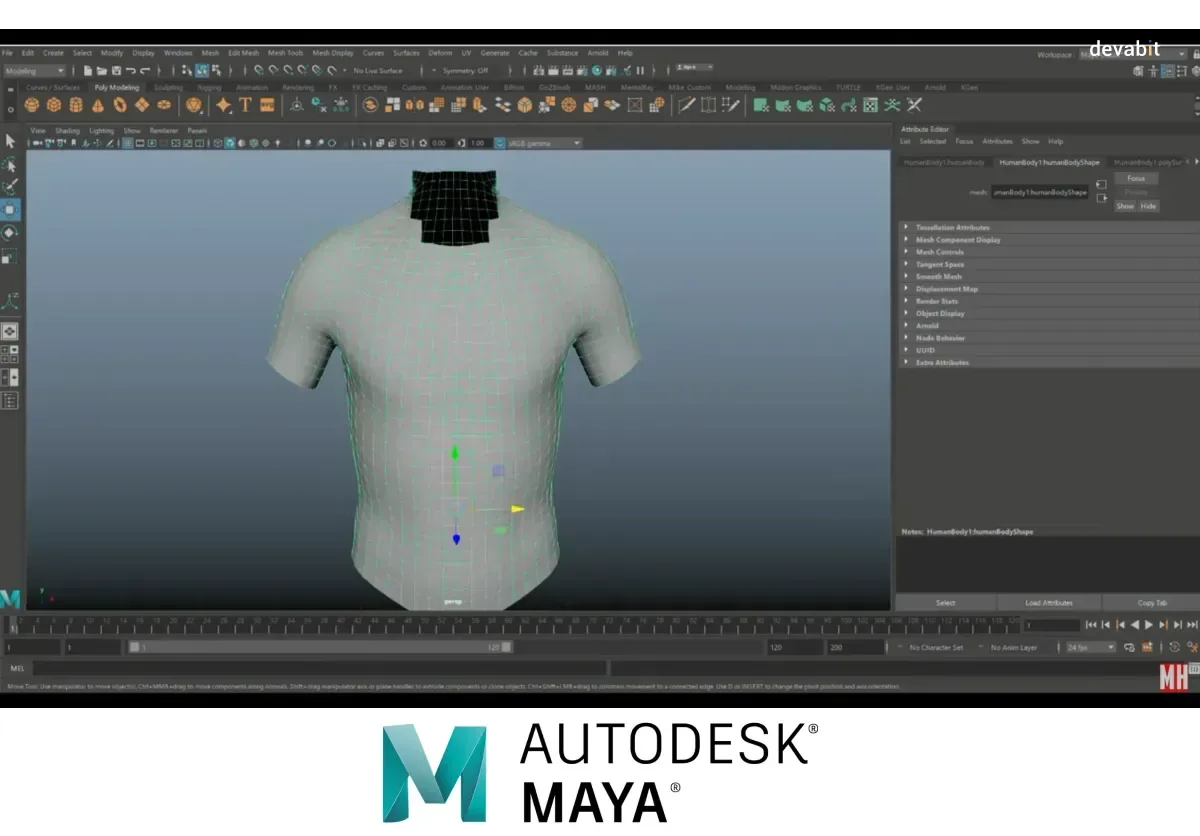
Anyway, each of these tools offers unique features that cater to different aspects of the fashion design and production process. Whether it is for high-fidelity fabric simulation, pattern making, or integration with production lines, these software solutions play a crucial role in modern fashion design workflows. They enable designers to bring their creative visions to life with greater speed and efficiency, pushing the boundaries of what is possible in fashion design.
VR and Fashion Shows: How They Relate to 3D Clothes Models
Recently, we have not even heard about VR technology and could not even imagine that today it will be so interconnected with fashion. But time flies fast, so let us tell you more about VR in fashion. The fusion of virtual reality and fashion shows is transforming how designers present their collections, bringing an immersive dimension to the traditional runway. With the integration of 3D clothes models, VR enables fashion brands to create interactive showcases that transcend geographical and physical limitations.

In recent years, the use of VR in fashion shows has been accelerating, especially as the technology becomes more accessible. Statistically, the virtual reality market within the fashion sector has seen an annual growth rate of approximately 30%, with projections indicating that this trend will continue as more brands seek innovative ways to engage audiences. This growth is fueled by the need to stand out in a crowded market and to overcome logistical challenges such as those presented by global events like the COVID-19 pandemic.
One notable example of VR's application in fashion was the 2021 virtual showcase by Balenciaga. The brand created a fully immersive VR runway show for their Fall collection, which was viewed through VR headsets provided to a select audience, and available as a video for the wider public. This approach not only eliminated the need for physical presence but also showcased the detailed textures and dynamics of the clothing in a way that a traditional runway could not.
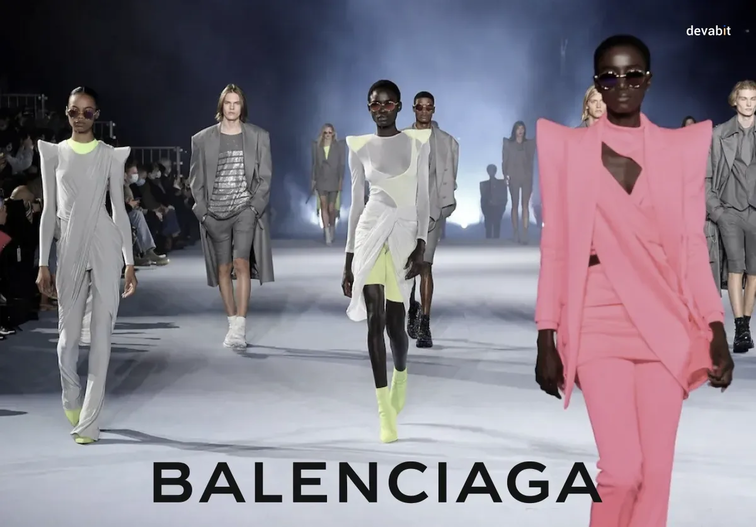
Another innovative use of VR and 3D models is the interactive fashion show experience offered by Ralph Lauren in 2020. The brand developed an online virtual store that allowed users to navigate through a digitally-rendered environment and view models wearing the latest collection. As viewers clicked on different items, the 3D clothes models provided a realistic view of the garments, including how they moved and looked from various angles.

By employing virtual reality, brands can provide a richer, more engaging viewer experience that highlights the intricate details of their clothing without the constraints of physical venues. Moreover, this approach enables designers to experiment with avant-garde presentation styles and environments that align with their creative visions, further enhancing the storytelling aspect of their collections. As technology continues to evolve, the relationship between VR, 3D modeling, and fashion shows is expected to deepen, offering even more exciting possibilities for showcasing fashion in innovative and sustainable ways!
How to Benefit Using 3D Clothes Models in Your Business
Of course, 3D clothes models have become so popular not without reason. The economic impact of adopting 3D modeling in the fashion industry is profound. For instance, companies that have integrated 3D clothes models report up to a 75% reduction in time spent in the sample production phase. Additionally, a study by the Digital Apparel Board found that businesses using 3D models saw a 30% decrease in returns due to the more accurate representation of garments to consumers online.

From a production standpoint, 3D clothes models allow for precise and flexible design adjustments. Designers can experiment with different colors, textures, and shapes before finalizing a design, which reduces the risk of costly mistakes in later stages of production. This capability is particularly valuable in an industry where consumer preferences are constantly evolving.
Now, let us show you some real cases of businesses that have successfully implemented 3D clothes models into their workflow and how it turned out!
The Real Examples of Implementing 3D Clothes Models in Your Business
Through the years of work with various 3D industries, our experienced devabit team has designed lots of unique and successful projects. Take a look at some of them and get inspired by their stories!
Pair of Thieves
Pair of Thieves is a US-based clothing brand of underwear, socks, loungewear, and shirts for men. The company required the constant development of high-quality visual content. But the visualization was supposed to be not only good-looking but also universal in terms of using models in the future. The devabit team developed a completely unique approach for modeling and imitating clothing forms. Thus, once new patterns and designs are released, it is easy to prepare the visualization.
The devabit designers have built realistic 3D clothes models and ultra-realistic PBR textures. Our team also designed a library with the brand's materials, textures, seams, cuts, and other elements, which allows combining new 3D models easily for any further collections. In addition, the automated system for image creation saves much time and effort, while clothes look flawlessly realistic.
As a result, our client got an easy-to-use, stable platform to customize new 3D clothes models and the ability to quickly present and sell them online.
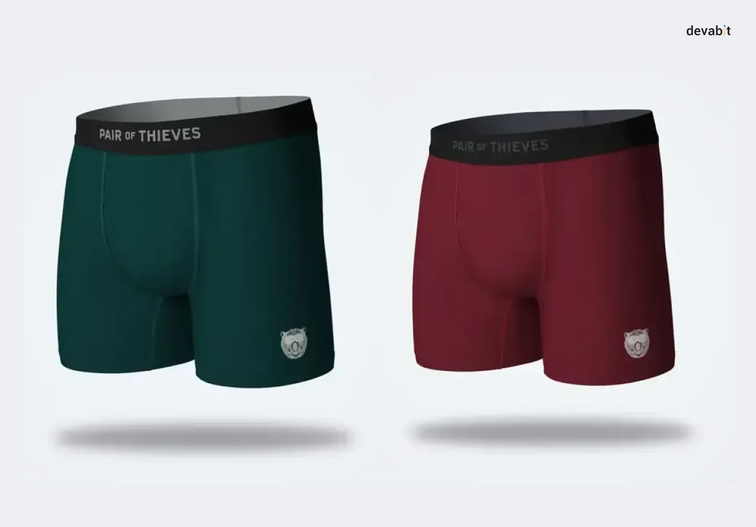
Choiss
Choiss is another brand for women, specializing in outerwear production. Following the modern trend of personalization, the web platform presents endless possibilities for a customer to create a unique product and immediately order it.
The major task was to build a real-time 3D configurator to allow users to customize and immediately visualize the 3D clothing models. The devabit team successfully developed the eCommerce platform as well as the brand's materials, textures, forms, and other elements to make it easy to combine new 3D clothes models. Moreover, the devabit’s innovation enabled users to produce multiple potential custom coat renders with the input of only a single coat model.
As you can see, the benefits of using 3D clothes models extend beyond internal operations to how businesses interact with their customers and stakeholders. They are quite real! With the development of this technology, the potential for new applications and innovations in using 3D clothes models seems limitless, promising even greater impacts on efficiency, creativity, and sustainability in the fashion industry.
devabit: Your Best 3D Modeling Partner
We think you have already ensured that in the competitive world of fashion technology, partnering with the right 3D modeling expert is crucial. At that place, devabit emerges as your ideal ally, offering specialized solutions that transform your creative concepts into stunning, market-ready designs. With a profound understanding of the fashion industry coupled with advanced technological expertise, we equip your business to lead in innovation and efficiency.
Why choose devabit?
Our client-focused approach guarantees that our solutions will take your designs to new heights, boosting production processes, reducing costs, and elevating your brand’s digital presence. We not only adapt to industry trends but also anticipate future opportunities, keeping you ahead of the competition.
Reach out today and experience the best 3D modeling services. Let us help you create striking, sustainable, and sellable fashion that resonates with modern consumers!
Ready to innovate? Contact us now and transform your fashion business with a leader in digital modeling!
Get in touch with devabit and start reshaping your approach to fashion with technology that makes a difference!
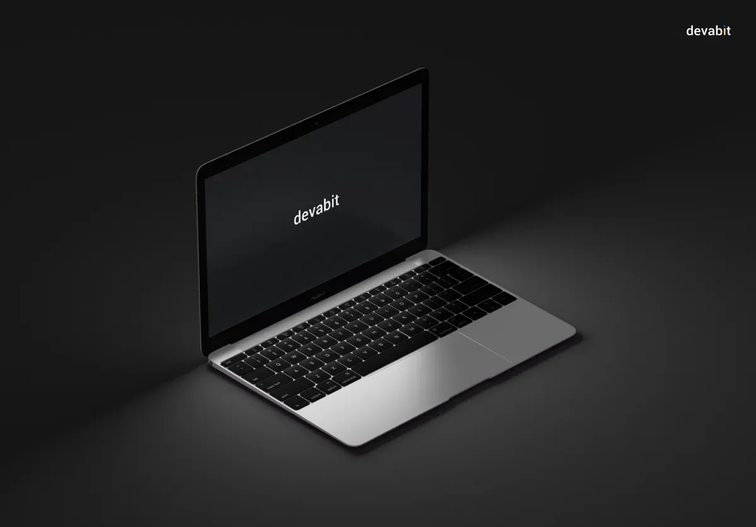
Recent Publications
Don't miss out! Click here to stay in touch.
Discover More

Relevant Articles View all categories
View all categories CONNECT WITH US WE’RE READY
TO TALK OPPORTUNITIES
THANK YOU! WE RECEIVED YOUR MESSAGE.
Sorry
something went wrong



